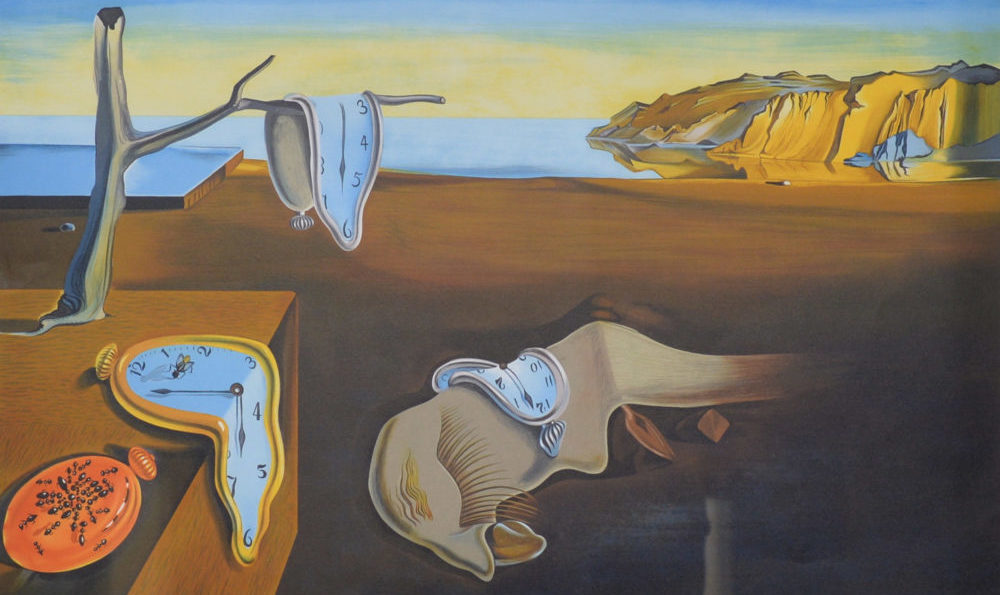Great advertising, like all great artwork, is at its core about communication, about conveying a message from artist to viewer in hopes the viewer sees the world or themselves in a new way. And here at Data-Driven Digital Agency, we use the cloud, machine-learning AIs, and big data to find insights that make our communication more effective than any dumb, intuitive artist could ever hope to do.
And to prove that, we’ve re-invented these old “masterpieces” to make them fit better in today’s digital age.
The Persistence of Memory by Salvador Dali
Though Dali was correct in stating that all of time is simply melting away and dying, our research shows that current demographics find this idea too bleak, and thus unrelatable. Cloud-driven research also shows younger generations can’t read analog clocks, especially ones that are all droopy. Instead, we’ve replaced all the imagery in this painting to be a diverse group of Millennials, hanging out at a beachside cliff, taking selfies and posting them to social media.
Guernica by Pablo Picasso
Early qualitative research suggests the powerful anti-Nazi statement made here is highly relatable to most viewers. In digging deeper, however, we used our proprietary AI software to scan and analyze the painting, which immediately scrambled our computer’s algorithm and fried a data server. We then partnered with IBM’s Watson, who suggested “this piece of communication would be more effective if it was a diverse group of Millennials sharing a positive-but-relatable experience in a location that appears aspirational.”
American Gothic by Grant Wood
Through focus groups and stalking our target on Instagram, we found the insight that the couple portrayed in this piece is not representative of Millennials. We’ve updated it from just two subjects to a large group of highly diverse Millennials. We replaced the pitchfork with a bunch of smartphones. Instead of looking somber, which data suggests Millennials find unrelatable, the characters are now laughing and doing an irreverent dance. And finally, instead of standing in front of a rural farmhouse, they are hanging at a really trendy brunch restaurant in Brooklyn or LA.
Mona Lisa by Leonardo da Vinci
Data shows us that our subject is of a relatable age and at relatable levels of both happiness and jadedness. However, data also suggests that the artist’s name doesn’t register with our target demographic. So while we didn’t change the painting at all, we’ve updated the name of its creator to be Leonardo DiCaprio.

